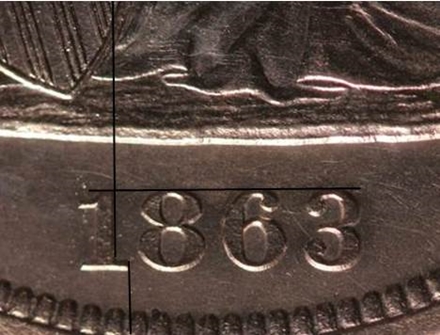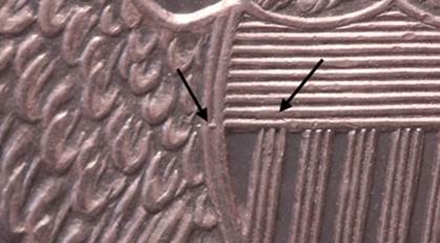|
|
Comments: This is the first of two uses of Obverse P1 and the only use of Reverse PA. Reverse PA is transitional. It was subsequently used to issue proof die marriages OC-P1 and OC-P2 in 1864. |
Obverse P1 Obverse P1 exhibits no significant die markers, but the date position should be adequate for definitive attribution. The date is a little lower in the field than most. The following photo shows the Obverse P1 attribution grid.  1863 Obverse P1 attribution grid
|
Reverse PA shows little in the way of die markers. Some minor extensions of the shield lines are the best we could find. Note that Reverse PA shows virtually no extensions of the vertical shield lines into the horizontal lines. Compare to Reverse PB, where 1-3 extends to horizontal line 5. The most notable extension is horizontal line #1, which crosses both shield borders to the left, extending slightly into the feathers. However, Reverse PB has a similar, though not quite as strong an extension, so be careful when using this as a die marker.  1863 Reverse PA shield line extensions
|
| Photo credits:
Obverse P1: 1863 PCGS Proof genuine, UNC details, altered surfaces, from the Osburn-Cushing reference collection. Reverse PA: 1863 PCGS PR63, from the Osburn-Cushing reference collection. |
